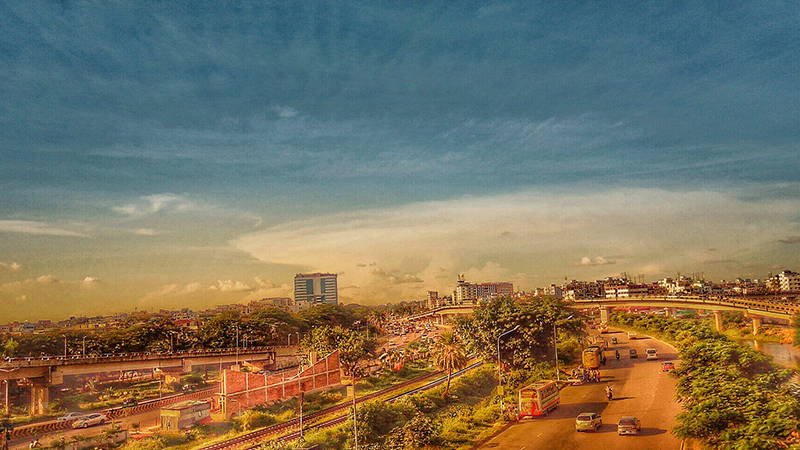GET IN TOUCH
- Please wait...

The World Economic Forum (WEF) has been generating reports about the competitiveness of countries and ranking them annually based on 12 pillars of competitiveness since 2004. Bangladesh ranks 109 in the current Global Competitiveness Report according to the Global Competitiveness Index.
Upon looking at the report, we can see that competitiveness has increased slightly from the last year’s report. This is because of slight changes in certain aspects of the competitive index. The 12 components of the competitiveness index referred to as the pillars are:

In the basic requirements segment of the ranking, Bangladesh hadn’t improved since its abysmal performance in 2013-14. A primary reason for this is that for basic human requirements to change drastically there needs to be a change in infrastructure and an increase in capacity on the supply side and this usually takes a lot of time. We’ve seen a lot of indicators that the basic requirements for this ranking have improved but this hasn’t yet been reflected in this report due to the time factor. I’m hopeful, however, that in the future this evaluation will improve significantly as this country is definitely going on the right track. This is mostly due to giant strides in the private sector that is not being affected much by political unrest.
According to the executive opinion survey component of the competitiveness index, the political unrests have amounted to more than 20% of the lack of competitiveness that Bangladesh shows compared to other countries in the world economy.
This has made it such that the score for institutions is 2.96, which hasn’t changed since last year’s report. The political situation in Bangladesh had been relatively stable since the 5th January elections last year with minor upsurges during the famed war crimes trials and execution of the sentences. Until the very recent blockades, the political unrest has been curbed down but this has had a serious impact on the institutions component of the Global Competitiveness Index for Bangladesh. The ranking points for institutions have also been greatly affected by the corruption in bureaucracy, which slows down economic processes. Bribery and friction related to the public sector have historically slowed down economic activity and have repeatedly been a barrier to growth in the country despite a growing private sector and an efficient hard-working labor force.
Recently, there have been major positive infrastructural changes in the capital city and other major cities in the country; the infrastructural problem still remains one of the biggest obstacles to making Bangladesh competitive in the global landscape since the changes have only been made in the major cities whereas rural infrastructure still needs a lot of work. Only 62% of the population has access to electricity and an efficient logistics and courier service doesn’t exist. According to the executive opinion, survey infrastructure is the biggest obstacle to the competitiveness of Bangladesh. As a twenty-something having grown up in Dhaka currently living in the United States, I understand the importance of solid infrastructure and what it can do for an economy. Bangladesh received a massive infrastructural boost in the late ’90s and early 2000s. This has been due to increases in power generation, the building of new highways, railway links, bridges, and other structures that have greatly boosted the infrastructure. In recent times a multi-purpose bridge along the Padma River, one of Bangladesh’s largest rivers that currently runs a ferry is planned and this will potentially connect over 30 million people to the capital and increase efficiency greatly.
With a country of over 160 million people, there is a massive potential for macroeconomic growth. Economic activity has increased heavily due to the private sector growth and expanding businesses in various sectors. But for the country to further increase its competitiveness in the global economy, Bangladesh must move to the production of more value-added goods. With institutional changes being slow, Bangladesh is still a relatively new country and in my opinion, has a very high potential to become a middle-income nation in the near future.
Our experts can help you solve your unique challenges
Stay up-to-date with our Thought Leadership and Insights